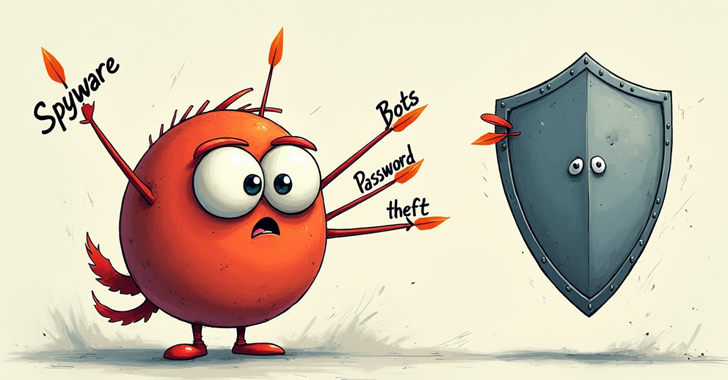THN Recap: Top Cybersecurity Threats, Tools, and Practices (Oct 28
- November 4, 2024
- Posted by: claudia
- Categories:

This week’s recap in cybersecurity reveals an array of significant threats and attacks that have left the digital landscape tumultuous. A notable highlight is the collaboration between North Korean state-sponsored hackers, known as Andariel, and Play ransomware actors. This coalition signifies a concerning trend as nation-state groups increasingly blur lines with criminal enterprises. Their coordinated attack, featuring a compromise that began in May 2024 and escalated into targeted assaults on multiple U.S. organizations by August, exemplifies the rising stakes in state-sponsored cybercrime.
Another serious threat is the activity of the Chinese group Storm-0940, which utilizes a botnet dubbed Quad7 to conduct password spraying attacks. These attacks target Microsoft customers, aiming to harvest credentials and exploit infiltrated networks for further malicious activities. The sophistication of this technique highlights the evolving tactics employed by cybercriminals to compromise valuable data.
Significant vulnerabilities have emerged within software platforms, including Opera’s web browser, which was recently found to be susceptible to an attack labeled CrossBarking. This vulnerability allows unauthorized access to private APIs and could potentially expose sensitive user data through malicious browser extensions. Addressing this issue is critical as it poses risks not only to OKLA users but also affects third-party sites.
In Taiwan, the threat actor Evasive Panda targeted government and religious institutions using a new toolset, CloudScout, to exfiltrate sensitive data from popular cloud services like Google Drive and Outlook. This incident underscores the persistent threat posed by advanced persistent threats (APTs) and their capabilities to infiltrate even secure environments.
Law enforcement also made strides against cyber threats, notably through Operation Magnus, which disrupted the infrastructure supporting RedLine and MetaStealer malware. This operation led to the shutdown of several servers in the Netherlands and the arrest of key individuals linked to these malware initiatives, marking a critical blow to the criminal ecosystem supporting such cyber threats.
In the realm of vulnerabilities, researchers flagged multiple security flaws in pan-tilt-zoom (PTZ) cameras and OpenText NetIQ iManager. The zero-day vulnerabilities in PTZ cameras could lead to unauthorized device takeover, while the flaws in NetIQ iManager could allow attackers to gain elevated privileges, raising concerns for enterprise security.
The ongoing Phish ‘n’ Ships campaign exploits legitimate websites to create fake product listings, further complicating the cybersecurity landscape. By driving traffic to counterfeit web stores, attackers siphon off credit card information from unsuspecting consumers, emphasizing the need for continuous vigilance in online marketplaces.
Funnull, a Chinese company mentioned in relation to various scams, has been implicated in fraudulent schemes, showcasing how malicious actors continually evolve their strategies to exploit unsuspecting individuals. Meanwhile, vulnerabilities have been discovered in Phoenix Contact CHARX SEC-3100 AC charging controllers, which could enable significant unauthorized actions by remote attackers, demonstrating that threats extend beyond traditional computing devices.
In an effort to fortify defenses, new resources and tools have been introduced, such as the SAIF Risk Assessment tool from Google, aimed at improving AI security practices, and CVEMap, designed to facilitate navigation through expansive vulnerability databases. These developments seek to empower cybersecurity professionals as they navigate an increasingly hostile digital environment.
For enhanced mobile security, experts emphasize the necessity of utilizing vetted open-source apps, implementing custom firewall rules, and employing privacy-centric browsing tools. Continuous firmware updates and the adoption of security-hardened operating systems can drastically reduce exposure to common cyber threats.
As the digital landscape faces multifaceted challenges, it remains critical for organizations and individuals to stay informed and proactive against cyber threats. The alarming statistic that a cyberattack occurs every 39 seconds further highlights the urgency for robust cybersecurity measures and constant vigilance. The fight against cybercrime is an ongoing battle that requires dedication, expertise, and community awareness to effectively safeguard digital assets.
